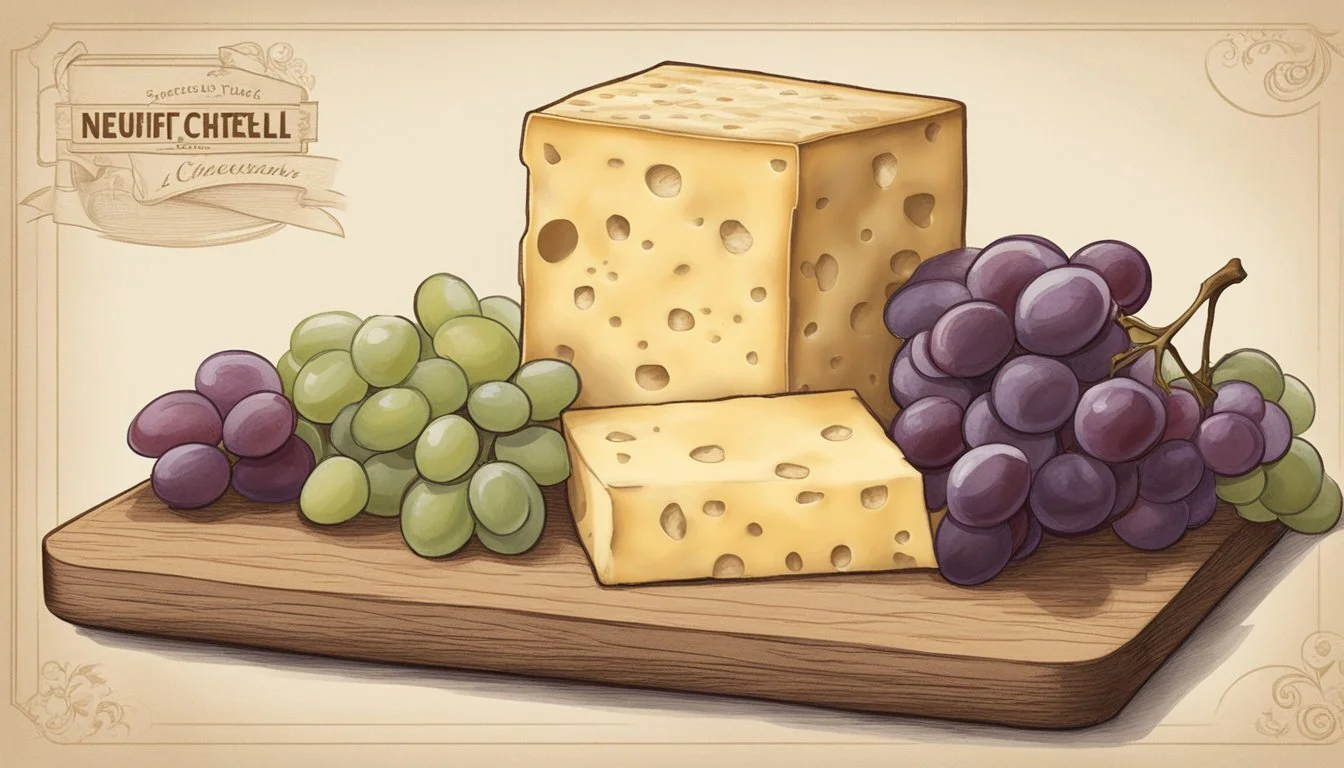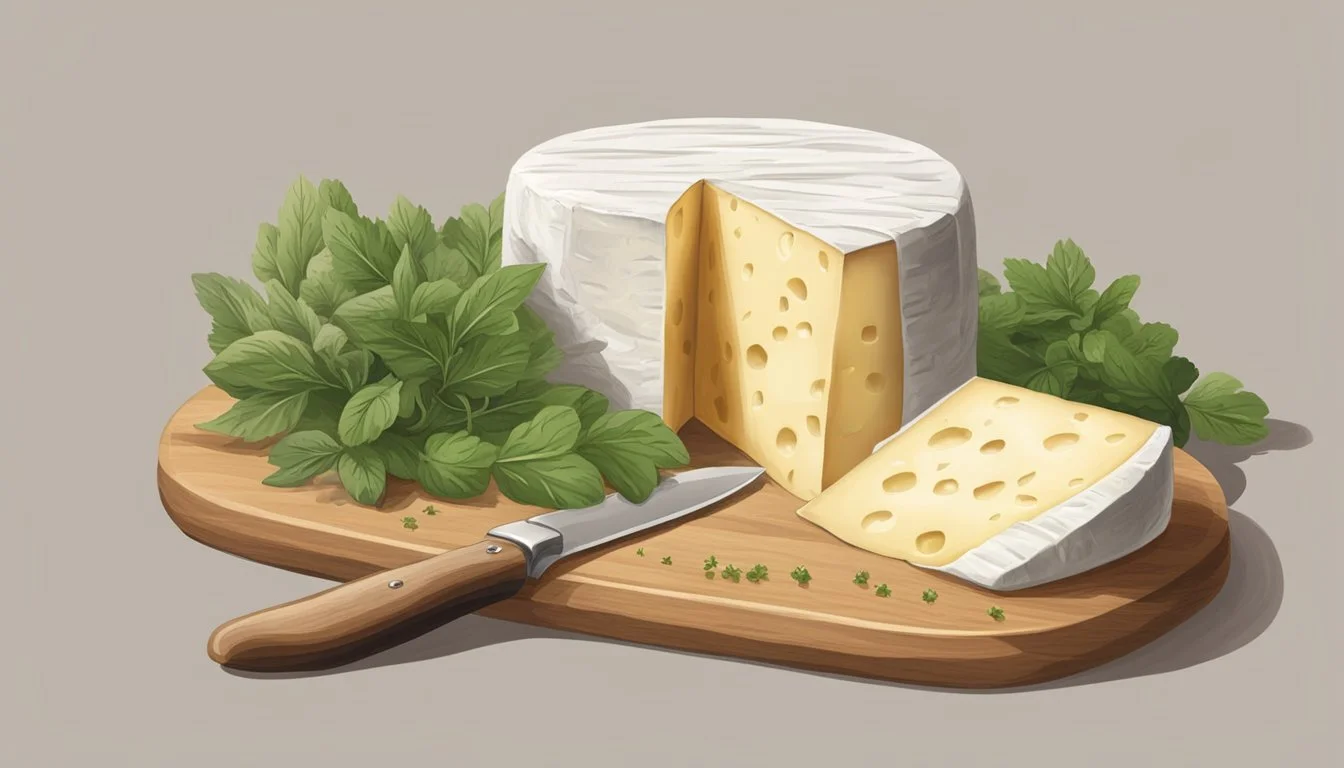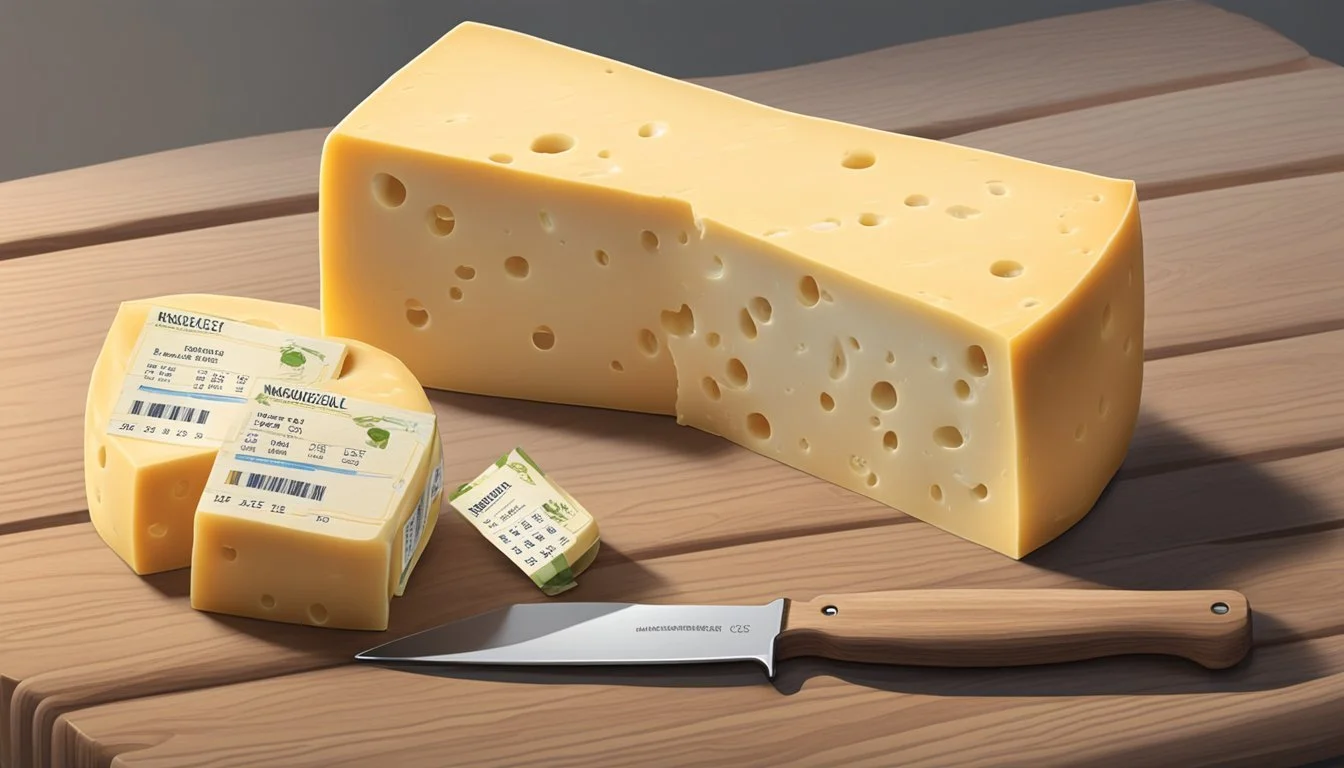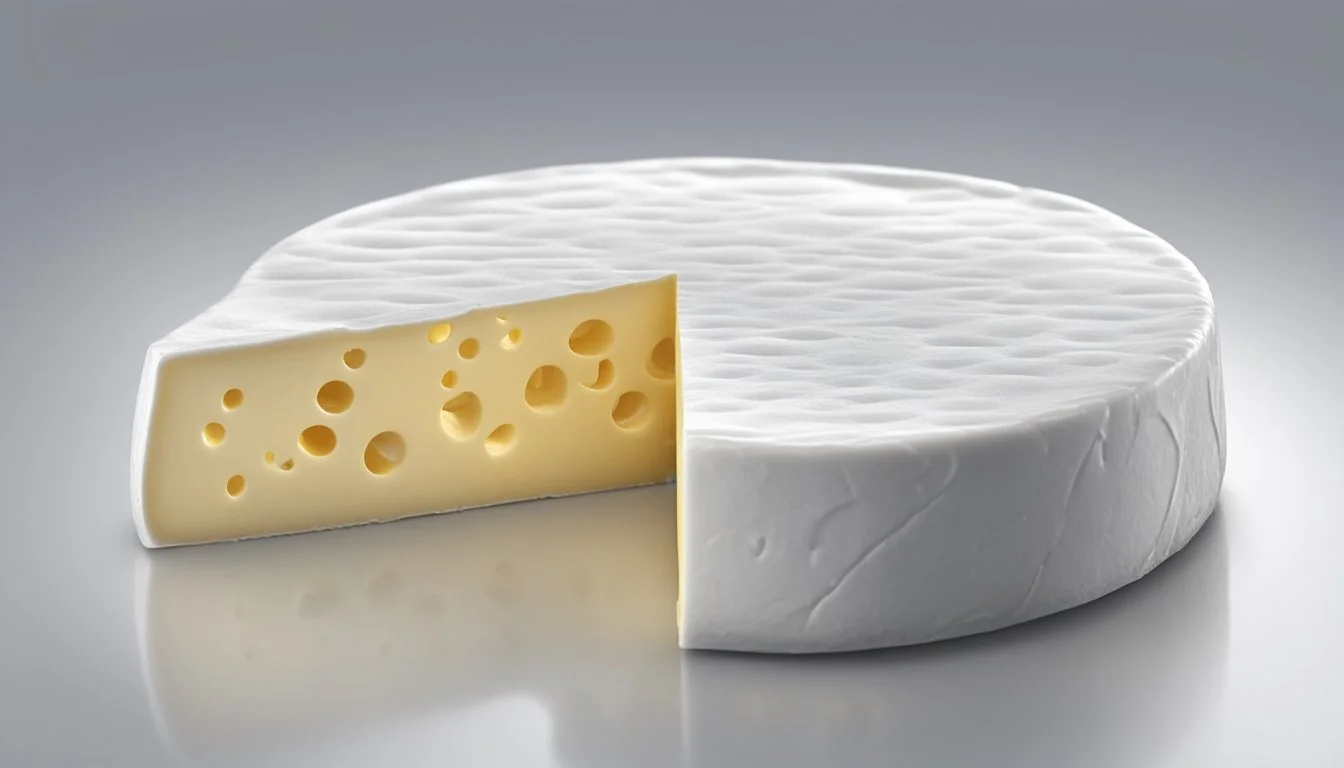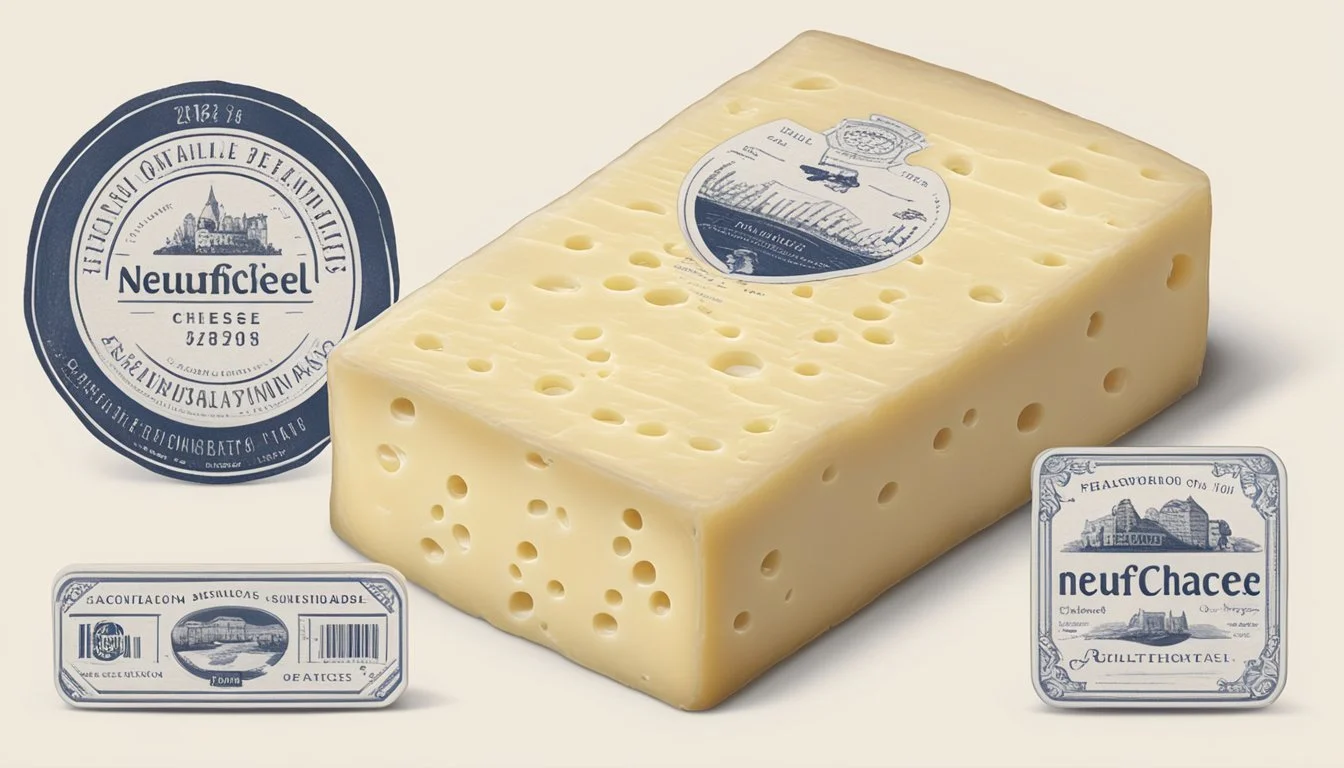How Long Does Neufchâtel Cheese Last?
Shelf Life and Storage Tips
Neufchâtel cheese (how long does cheese last?), a traditional soft cheese (What wine goes well with cheese?) that originates from the Normandy region in France, offers a delightful creamy texture and a rich history. With its origins dating back to the 6th century, this French cheese is one of the oldest in the country. Regarded for its heart-shaped form and smooth, delicate taste, it has been a staple in French cuisine and an inspiration for American adaptations such as cream cheese (how long does cream cheese last?).
The longevity of Neufchâtel cheese is a topic of importance for both culinary professionals and cheese enthusiasts. Storing it correctly is key to preserving its freshness and flavor. When unopened and kept refrigerated at a consistent temperature between 35°F and 40°F, Neufchâtel maintains its quality and prevents spoilage. The shelf life, however, can differ based on brand and quality, emphasizing the need for attentive care in storage.
While its smooth texture and subtle tang make Neufchâtel cheese a versatile ingredient in numerous dishes, understanding proper storage and shelf life ensures that one can enjoy the cheese in its prime state, whether used in spreadable form or incorporated into more complex recipes. Therefore, knowing how long Neufchâtel cheese lasts under different conditions is not only practical but also essential for anyone looking to savor this piece of Norman tradition at its best.
Origins and History
Neufchâtel cheese boasts an esteemed legacy, rooted deep within the fabric of French culinary tradition, and encapsulates the evolution of cheese-making skills over centuries. This venerable cheese has become known for its distinctive heart shape and rich taste.
Neufchâtel in Normandy
Neufchâtel is one of the oldest cheeses from Normandy, a tradition stemming from as far back as the 6th century. Normandy’s village cheesemakers have perfected their craft over generations, cultivating the fine, soft, slightly grainy texture for which French Neufchâtel is celebrated.
Heart-Shaped Tradition
The heart-shaped form of Neufchâtel is more than a whimsical design; it is ingrained in legend and tradition. As the narrative goes, during the Hundred Years' War, Normandy’s maidens would present heart-shaped Neufchâtel varieties to English soldiers as tokens of affection.
American Neufchâtel vs. French Neufchâtel
American Neufchâtel differentiates itself from its French ancestor by a lower fat content, resembling a lighter version of American cream cheese. While it shares similarities with French Neufchâtel, they are distinct products, with the former perhaps more linked to modern dietary preferences and the latter to time-honored tradition.
Characteristics of Neufchâtel Cheese
Neufchâtel cheese is a traditional French dairy product known for its distinct characteristics, ranging from its texture and flavor to its unique rind.
Texture and Flavor Profile
Neufchâtel boasts a soft yet slightly grainy texture, setting it apart from its creamier counterparts. Its flavor profile is typically described as tangy and mildly earthy, offering a balance that excites the mouthfeel.
Fat Content and Varieties
In terms of fat content,
French Neufchâtel: Made using only milk
American Neufchâtel: Often includes milk and cream, resulting in a lower fat content compared to cream cheese (23% milk fat for American Neufchâtel vs. at least 33% for cream cheese).
Bloomy Rind and Appearance
The cheese is enveloped in a signature bloomy rind, akin to that found on Brie and Camembert, contributing to its creamy edge and aroma. Its appearance is white and sometimes shows a delicate rind that signals its maturity and adds to its overall appearance and texture.
Culinary Uses
Neufchâtel cheese is a versatile ingredient beloved for its creamy texture and tangy flavor, lending itself well to both cooking and baking. Below, explore its specific applications in the culinary world.
Neufchâtel in Recipes
Neufchâtel can be effectively used in a variety of recipes. Its consistency allows it to melt seamlessly into sauces and soups, providing a rich and smooth base. In baking, this cheese contributes to moist and delectable desserts, such as traditional French cheesecakes, and enhances savory dishes with a creamy dimension.
Pairing with Other Ingredients
In terms of pairings, Neufchâtel cheese complements a range of ingredients. For a simple yet delightful treat, one can spread it over breads such as bagels and artisan loaves. It also pairs well with onions in a dip or as a topping to a fresh salad, showcasing its spreadable nature.
Alternative to Cream Cheese
Due to their similar properties, Neufchâtel serves as an excellent lower-fat alternative to cream cheese in culinary creations. It can be substituted at a 1:1 ratio in recipes; however, one should note its slightly higher moisture content. This makes it a particularly good choice for creating lighter versions of cheesecakes and creamy desserts.
Storage and Shelf Life
Proper storage methods can significantly affect the shelf life of Neufchâtel cheese, ensuring that it remains fresh and retains its best quality for as long as possible. It's essential to manage temperature and packaging to prevent spoilage.
Refrigeration and Freezing Options
Refrigeration: Neufchâtel cheese should be kept in the fridge at a consistent temperature range between 35°F and 40°F (1.7°C and 4.4°C). This temperature slows down spoilage without affecting the cheese's texture. The refrigerated shelf life of unopened Neufchâtel cheese can typically extend a few weeks past its expiration date, provided the packaging remains intact and contamination is avoided.
Freezing: Although freezing is not ideal for all types of cheese, Neufchâtel can be frozen if necessary. To freeze, tightly wrap the cheese in heavy-duty aluminum foil or plastic freezer wrap, or place it in heavy-duty freezer bags. The cheese can be frozen for up to two months. When using frozen Neufchâtel, it is best when incorporated into cooked dishes, as freezing can alter the texture.
Detecting Spoilage
One should check for signs of spoilage such as an off odor, strange flavors, or an unwanted change in appearance. If mold develops or the cheese exhibits any of these spoilage signs, it is advised to discard the entire package to prevent the risk of foodborne illness.
Packaging and Preservation
To maintain the cheese's moisture content and prevent it from drying out, package it correctly. Wrap Neufchâtel cheese in its original wrapping or in airtight packaging after opening to provide protection against contamination and moisture loss. If the cheese does not come in a resealable package, using aluminum foil or freezer bags for storage in the fridge is effective in preserving its freshness. Proper packaging not only extends the shelf life but also preserves the quality and flavor of the Neufchâtel cheese.
Nutritional Information
Neufchâtel cheese is a lower-calorie alternative to cream cheese, offering a balance of fat and protein, and it contains important nutrients like calcium.
Fat and Protein Content
Neufchâtel cheese contains approximately 23 grams of fat and 9.15 grams of protein per 100 grams. The fat is predominantly saturated, making up about 64% of the recommended daily value. The protein content contributes to muscle maintenance and repair.
Calcium and Dietary Benefits
Neufchâtel cheese can be a valuable source of calcium, an important mineral for bone health. Additionally, the cheese offers a modest calorie count of 253 calories per 100 grams, making it a suitable choice for those monitoring their energy intake.
Making Neufchâtel at Home
Making Neufchâtel cheese at home requires careful attention to the selection of ingredients, precise execution of the production process, and adherence to aging and maturation steps.
Ingredients and Tools Required
For the homemade production of Neufchâtel cheese, one must source high-quality, pasteurized milk, typically from cows, though goat milk can also be used. The other primary ingredients include a cheese culture, which introduces the necessary bacteria to the milk, and rennet, an enzyme that coagulates the milk. Calcium chloride may be added to pasteurized milk to help the curdling process, and salt is required for flavor and as a preservative.
The tools needed for this process are generally available and include a large pot, a thermometer, cheesecloth, a curd knife for cutting the curd, molds for shaping, and a cheese press.
Ingredients Quantity Pasteurized Milk As required Cheese Culture As per recipe Rennet As per recipe Calcium Chloride Optional Salt To taste
Tools Purpose Large Pot For heating milk Thermometer To monitor temperature Cheesecloth For draining whey Curd Knife To cut the curd Cheese Molds For shaping Cheese Press To form the cheese
The Production Process
The production process begins by slowly heating the milk to a temperature where the cheese culture can be added. After the bacteria from the culture has had time to ferment the milk, rennet is added to coagulate the milk into a solid curd.
Once the milk is set, the curd is cut into cubes, allowing the whey to separate. The curd is then gently stirred, drained, and placed into molds. Care must be taken not to agitate the curd excessively to ensure a smooth, creamy texture.
Aging and Maturation Steps
Homemade Neufchâtel does not usually require an extensive aging process; this cheese is often enjoyed fresh. However, for those who prefer a more developed flavor, it can be aged in a controlled environment at the right humidity and temperature. Aging may last for several weeks, during which the cheese develops its distinctive taste. Throughout this period, the cheesemaker will monitor the salt content and mold growth to ensure the cheese matures correctly. No artificial stabilizers are typically used in the maturation of traditional Neufchâtel cheese.
Health and Safety Considerations
When discussing the health and safety of Neufchâtel cheese, it is crucial to understand the role of pasteurization in bacterial control and the implications for those with certain allergies or dietary restrictions.
Pasteurization and Bacterial Concerns
Pasteurization plays a critical role in the safety of dairy products, including Neufchâtel cheese. This heat treatment process eliminates harmful bacteria that can be present in milk. Cheese made from unpasteurized milk, although often prized for its flavor, can carry a higher risk of containing pathogens like Listeria, Salmonella, and E. coli.
For Neufchâtel, which is typically a pasteurized product, strict regulatory guidelines ensure that the cheese is produced in a manner that minimizes bacterial contamination. Manufacturers often include stabilizers in the cheese-making process to maintain the product's safety and consistency.
Allergies and Dietary Restrictions
Neufchâtel cheese contains dairy, which can be problematic for individuals with milk allergies or lactose intolerance. The cheese's dairy content also makes it unsuitable for a vegan diet. Knowing the ingredients and process used to make Neufchâtel cheese is important for consumers managing dairy-related dietary restrictions.
People with allergies should ensure that there is no cross-contamination during the cheese's production. For example, utensils and surfaces used for Neufchâtel cheese should not be exposed to raw meats or other allergen-containing foods without proper sanitation to avoid any potential allergenic contamination.
Regulations and Standards
Neufchâtel cheese is subject to strict regulations to ensure authenticity and safety for consumers. These regulations govern everything from its designation of origin to its composition and labeling.
Protected Designation of Origin (AOC)
French Neufchâtel, bearing the Appellation d'Origine Contrôlée (AOC) designation, must adhere to precise production methods and geographical specifications. This includes the area in the Normandy region of France where the cheese must be made. The AOC status confirms that French Neufchâtel has met these stringent standards, which helps to protect its quality and reputation.
Region: Normandy, France
Production: Specified methods and standards
Labeling and Composition Laws
Regulations around labeling and composition are in place to ensure that consumers are well-informed about the Neufchâtel cheese they purchase. The Food and Drug Administration (FDA) defines Neufchâtel cheese in the Title 21 of the Code of Federal Regulations. These regulations prescribe the permissible ingredients, fat content, and moisture levels. For example, milk, nonfat milk, cream, and clotting enzymes are the primary dairy ingredients allowed, and the cheese must maintain specific fat and moisture content standards.
Ingredients: Milk, nonfat milk, cream, clotting enzymes
Fat Content: Prescribed by FDA regulations
Moisture Content: Defined standards
Labeling laws also mandate clear indication of any optional ingredients, such as salt or whey products, and that packaging must provide accurate and truthful information regarding the contents and nutritional information of the cheese.
Cultural Significance
Neufchâtel cheese is more than just a culinary delight; it embodies the enduring traditions and culture of France, particularly reflecting the heritage of Normandy.
Neufchâtel in French Heritage
In the landscape of French cheeses, Neufchâtel stands out with a storied heritage tracing back to the 6th century. It is one of France's oldest cheeses and is deeply interwoven with the cultural fabric of Normandy. This soft, mold-ripened cheese is celebrated not only for its taste but also for its place in French heritage, often linked with festive traditions. Regular consumption in local households and its common pairing with cidre, a regional apple cider, showcase its longstanding presence in French culture.
Tradition and Preservation:
Age-old techniques: The production of Neufchâtel cheese utilizes traditional cheesemaking processes that have been passed down through generations.
Designation: It has earned the prestigious status of an Appellation d’Origine Contrôlée (AOC) product, underlining its importance to the regional identity.
Popular Myths and Stories
Neufchâtel is enveloped in romantic and endearing myths that contribute to its charm. One popular story suggests that during the Hundred Years' War, young Normandy women fell in love with English soldiers and expressed their affection by giving them heart-shaped Neufchâtel cheese. This gesture not only signifies the cheese's symbolic representation of love but also shows the personal stories and emotions connected to its history.
Cultural Symbolism:
Heart-shaped form: The distinctive shape is a unique feature that has come to symbolize love and affection, rooted in local lore.
Impact on festivities: As a part of festive traditions, the cheese carries with it a sense of community pride and is a staple during celebrations.



